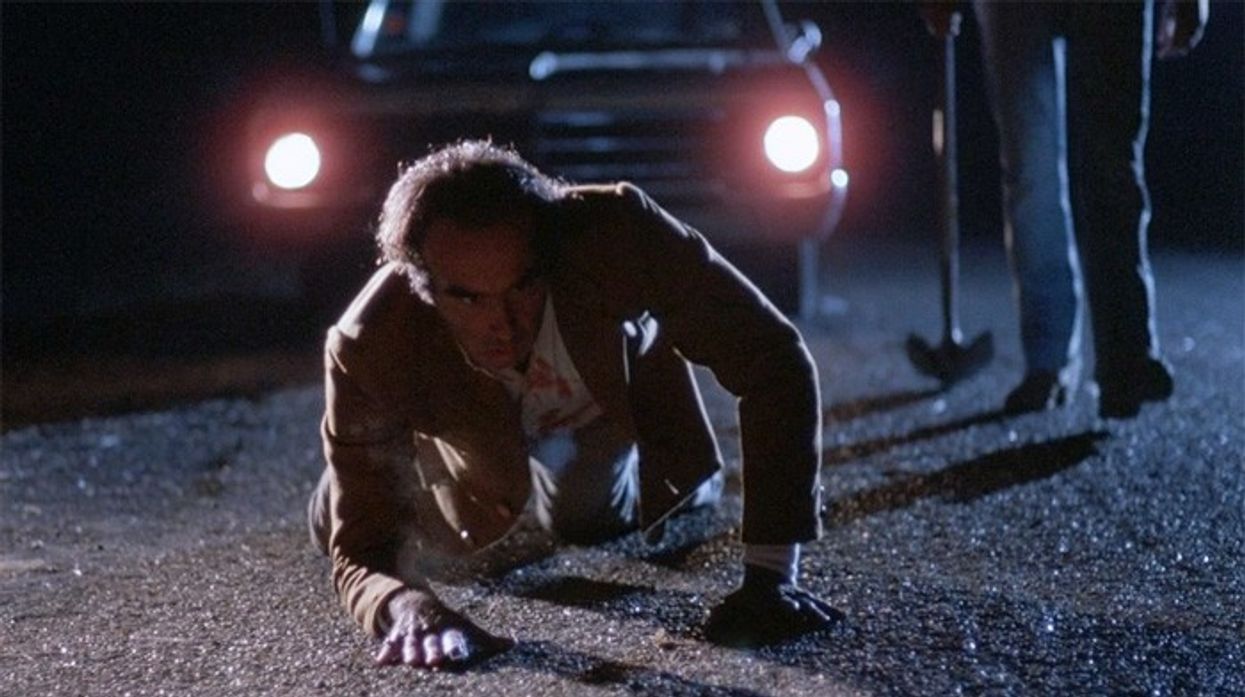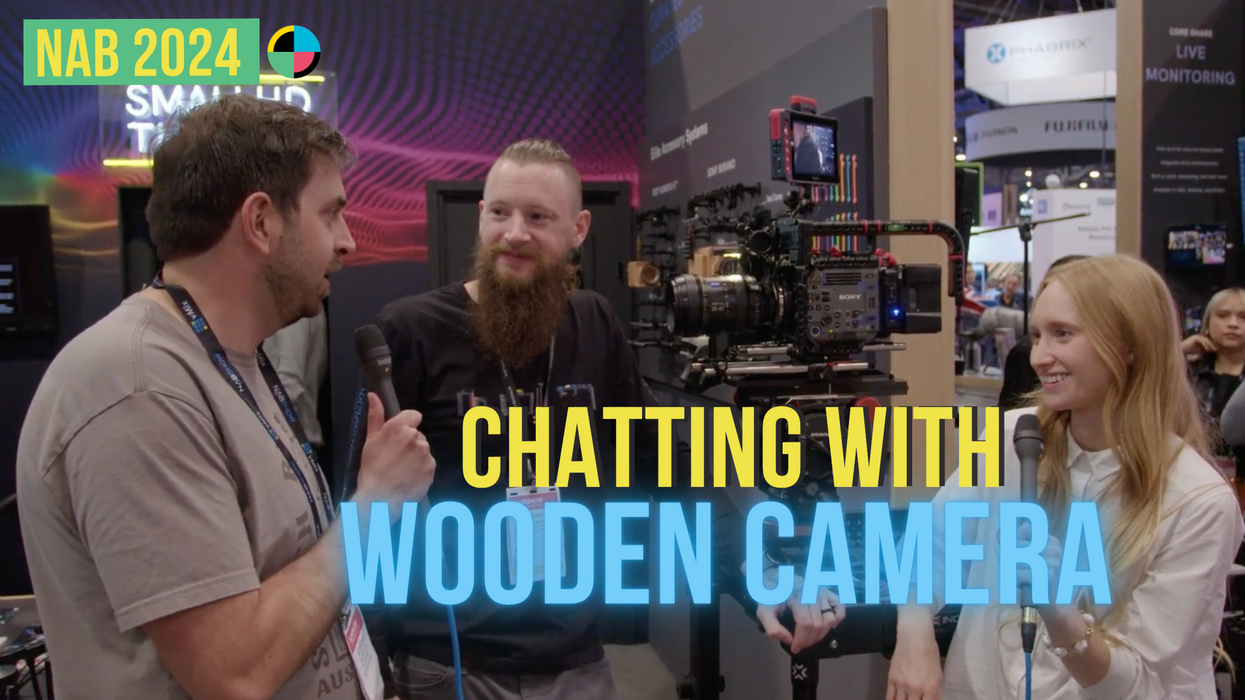7 Lessons in Genre: How Horror and Noir Made the Coen Bros. 'Blood Simple' Anything But
Here's how the Coen brothers leveraged genre for their now-classic indie debut, Blood Simple.

Blood Simple, the Coen brothers' first film, is a classic of neo-noir, full of visual economy and artful storytelling. But it also used horror film techniques to maximize suspense on a low budget, foreshadowing the directors' fascination with genre.
While many of the Coens' films are, superficially, genre pieces, none really is, and that's because they understand how to use all the different elements of cinema—all in their own way—to conjure a tone and story that communicates the ineffable magic of a good movie. It's something that you can't quantify, but know it when you see it, and if using conventions of genre helps you get there, then you could do far worse than to follow the example set by the Coens.
Here are seven valuable genre lessons from Blood Simple.
1. Genre pays
Following the example of their friend Sam Raimi, who had already had some success withThe Evil Dead, the first-time filmmakers raised money for Blood Simple with a newly-released two-minute trailer (above) featuring Raimi's muse, Bruce Campbell.
"The financial model for the film...was also a creative influence on it."
In order to make the trailer as appealing as possible to investors, Ethan recounts in the excellent book My First Movie (a must-read for any film fan): "It was presented more as an action-exploitation type movie than it ended up being....In the early '80s, there was a real vogue for these low-budget horror movies, some of which did really well commercially."
Even though both brothers loved noir— especially novels of James M. Cain and Dashiell Hammett, masters of pulp fiction— Ethan said that "the financial model for the film...was also a creative influence on it [in terms of horror]."
2. Set the tone in the first shot
The connection with Raimi came from Joel's stint as an assistant editor on Evil Dead, so the brothers were already aware of the aforementioned financial realities of the business. They also knew how to set a mood through editing.
This is apparent from the opening shot of the film, a long shot of flat and desolate Texas road over which we hear the first words of the film, delivered by the inimitable M. Emmet Walsh: "The world is full of complainers, but the truth is, nothing comes with a guarantee." This mix of noir dialogue combined with stark desert imagery (that calls to mind slasher flicks like The Texas Chainsaw Massacre) helps set a tone that guarantees the audience will remain on the edge of their seat.
3. Humor can work in any genre
In their article "Death’s Rich Pageantry, or Skipp and Spector’s Handy-Dandy Splatterpunk Guide to the Horrors of Non-horror Film,” horror novelists John Skipp and Craig Spector observe that “horror is the engine that powers every movie you ever loved.” Their argument is that all drama is about conflict, and with conflict comes the possibility of some "dark, horrifying outcome."
The Coen brothers understood this implicitly in Blood Simple. Even when the Coens make comedies, they are never really funny, per se. Or, rather, they are, but in the sense that humor operates as a safety valve, a way to cope with the oppressive nature of reality, where death can (and often does) lurk around every corner.

The disjunction between life and death and truth and fiction is made apparent in an early sequence that takes place at a bar owned by a jealous husband (noir trope) Julian (Dan Hedaya); as he meets with Visser in a back office, the bartender Meurice dances up front to the Four Tops and charms a woman, providing a brief moment of release from the unrelenting tension.
4. Use cinematography to bend genre
Even though the story of Blood Simple—a love triangle ending in murder and double-crossing—is classic noir, the cinematography of Barry Sonnenfeld, as the aforementioned horror novelists observe, "mix[ed] the fevered insanity of Raimi’s Evil Dead camerawork with the low-key, atmospheric lighting of classic film noir...emphasizing tense close-ups and unexpected, jarring cuts."
The film also uses repetition of image to make its theme apparent, as well as to drive the narrative forward. A pair of dead fish, grotesque and horrific in closeup, make several appearances, driving home the omnipresence of death in the film's universe, as well as the relationships between Julian/Visser and Ray/Abby (both of which are redolent with the cloying smell of death). Similarly, a Zippo lighter owned by Visser plays a pivotal role in the plot's unfolding.
5. Blend genres
Perhaps no other sequence in the film exemplifies the genre-bending principles of Blood Simple as much as the end, which pays homage to both The Shining and Rear Window.
In the above sequence, the shot of Abby from across the way, viewed through the scope of Visser's rifle, is reminiscent of Jimmy Stewart's view of his murderous neighbor in Alfred Hitchcock's film. Like the Coens, Hitch was never averse to mixing comedy and tragedy, the absurd, violent, surreal and romantic, or whatever else he thought was necessary for his film.
Similarly, echoing Kubrick's classic The Shining (another film which defied genre expectations, to say the least), a pivotal scene in Blood Simple takes place in a bathroom, where Visser meets his end after having suffered a debilitating hand injury.
Of course, it's easy to draw parallels between films, and one could play six degrees of genre all day long; the important thing is to realize that, in filmmaking, "genre" isn't just not a dirty word. Certainly, there are conventions and tropes to be followed, but they are more effective, I would argue, when subverted; in doing so, more often than not, one finds that the whole is more than the sum of its parts.
6. Embrace tropes...
In the character of Visser (especially at the end) we find a textbook example of the archetypal "monster" (a force of implacable evil), a figure elucidated by scholar Christopher Booker in his book The Seven Basic Plots. This archetype, which Booker cites as being around for millennia (think Beowulf) is typified in Walsh's performance, as well as by many other performances of many, many other characters in the work of the Coen Brothers.
7. ...and subvert tropes
For a filmmaking tyro, there can be a temptation to go one of two directions with genre—both extreme, and both, I think, inadvisable: one is slavish devotion to the idea of genre and its conventions, and the other insisting on an ersatz and aggressive "originality," a breaking of rules just to hear the sound of them snapping.
"Genre is a framework on which to hang ideas: it's a coat rack that often gets mistaken for the coat."
This is not to say that rules are not there to be broken, or that there is anything wrong with "genre" as an idea or a set of conventions. But, as has been demonstrated onscreen time and time again, genre is a framework on which to hang ideas: it's a coat rack that, unfortunately, often gets mistaken for the coat.
The Coens use horror tropes in Blood Simple for a variety of reasons, both aesthetic and(to a lesser degree) economic. Horror helped raise money for their film, as a sound investment; it also, crucially, added suspense and dread, as well as a unique style to a low-budget production. In the admixture of mordant humor and violence—a combination that would become a trademark—they found and began to establish their own unique voice as filmmakers.
A new 4K restoration of 'Blood Simple' is being re-released at Film Forum starting July 31. Purchase tickets here.












